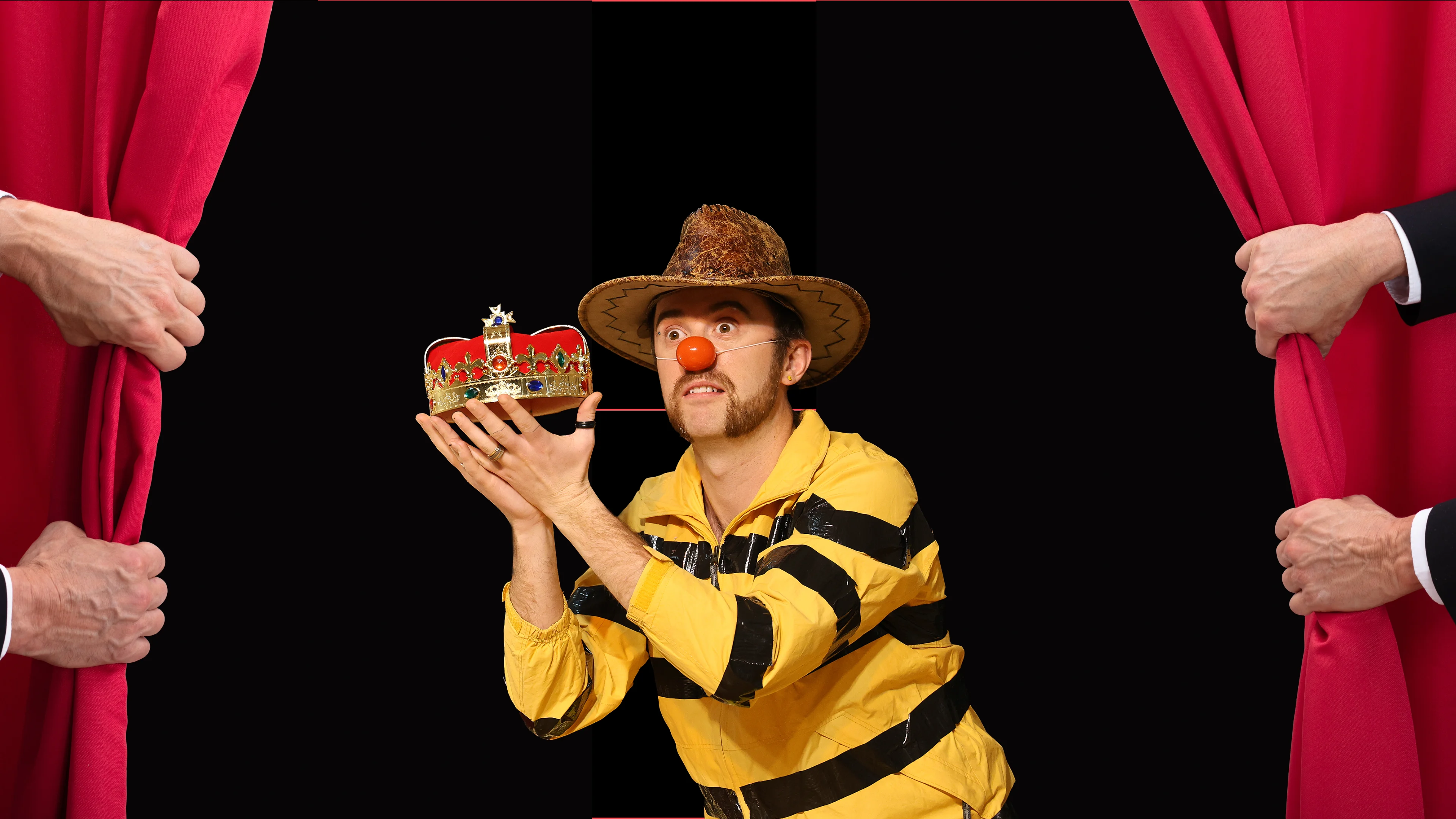
Taster Class In Clown Comedy
Theatre Deli, London
Learn More

Clocking is often a specific fourth wall break — the rest of the performance pauses, you hold a moment of stillness (a fixed point), and you turn to look at the audience to share a look, a grin, or another reaction. It’s a deliberate check-in that says, “You saw that too?” and invites them into the joke.
It’s a form of Audience sensitivity and one of the simplest, most reliable ways to build complicity.
Clocking can be a hilarious moment in and of itself. It reveals the cheeky clown underneath — the human behind the gag — and gives the audience permission to laugh. That flash of shared recognition connects them to you as a performer, which makes everything that follows land harder.
Share with Us: Let the audience see how you feel about what just happened — surprise, pride, embarrassment, joy.
Check In: Make eye contact, turn your head, or simply shift your attention toward them so they know they’re included.
Use Fixed Points: Often a clock is paired with stillness so the audience can process the beat.
React, Don’t Explain: The audience doesn’t need you to tell them what happened — your reaction is enough.
Take Them In: Use the pause to genuinely see them — are they with you, are they bored, are they laughing? This makes your next choice sharper.
Clocking isn’t just about connection — it’s also a rhythm tool. A well-timed clock can stretch a laugh, give space for a punchline to breathe, or act as a surprise beat that tips a scene into even bigger comedy.
